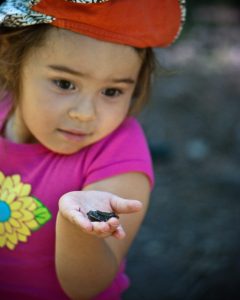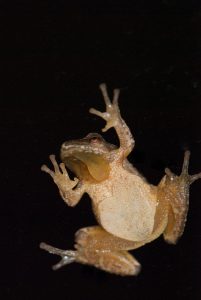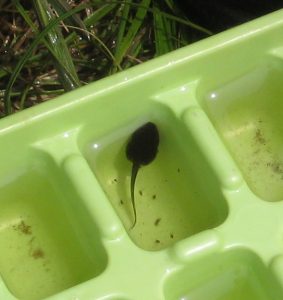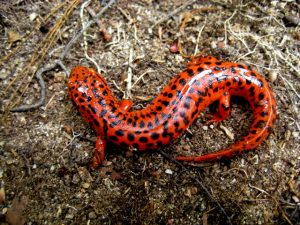Spring is so close! How can you tell? Listen!
In the coming days and weeks, you will hear more and more peeps, croaks, and chuckles in the night. Frogs are headed to their vernal breeding grounds and searching for mates. Their method? Overwhelmingly to call out loud for a female.
Believe it or not, we can learn a lot about the health of our habitats by listening for these noisy amphibians. By identifying species and estimating abundance, we know more about the diversity that exists in an area and the availability of clean freshwater. If a change in diversity or abundance is noted over time, so may the assessment of the habitat.
Irvine Nature Center will be hosting two opportunities to come out, learn your local frog calls, and learn to record data as part of citizen science projects. Check them out!
Find the Frogs Campfire
Head out to our campsite for a campfire and be serenaded by thousands of frogs! We’ll go on a short hike out to a better listening spot and learn how to tell which frog is which by sound. Then, back to the campfire to warm up and roast s’mores! Be sure to wear boots that will keep your feet dry and dress for the weather. Remember, frogs like the rain,
All ages (6 and up recommended)
Friday, March 20th, 6:45-8:15 p.m.
$10 for members; $20 for non-members
Price per family of 4
FrogWatch Frenzy
A chorus of frogs ushers in April showers! Join a naturalist for a dusk hike to our wetland to learn about some of our native amphibians. We will look for tadpoles, adult amphibians, and record frog call data for FrogWatch USA—a citizen science program. Bring a flashlight and prepare to get your feet wet!
All ages (6 and up recommended)
Saturday, April 18th
7:00 p.m. – 9:00 p.m.
$5 for members; $10 for non-members
With your help, Irvine will be able to create some baseline data for our wetlands. As we restore wetland habitat and do what we can to improve the health of our watershed, we hope to see our amphibian population thrive!
- A green frog being gently handled by a budding herpetologist!
- Spring peepers are one of the first frogs to visit vernal pools. They are tree frogs and can stick to smooth surfaces, as you can see in this photo.
- Frogs in Maryland rely on wetlands. They lay their gelatinous eggs which hatch as tadpoles and grow into froglets.
- Frogs aren’t the only creatures who benefit from healthy wetlands. Check out this beautiful Northern Red Salamander!




